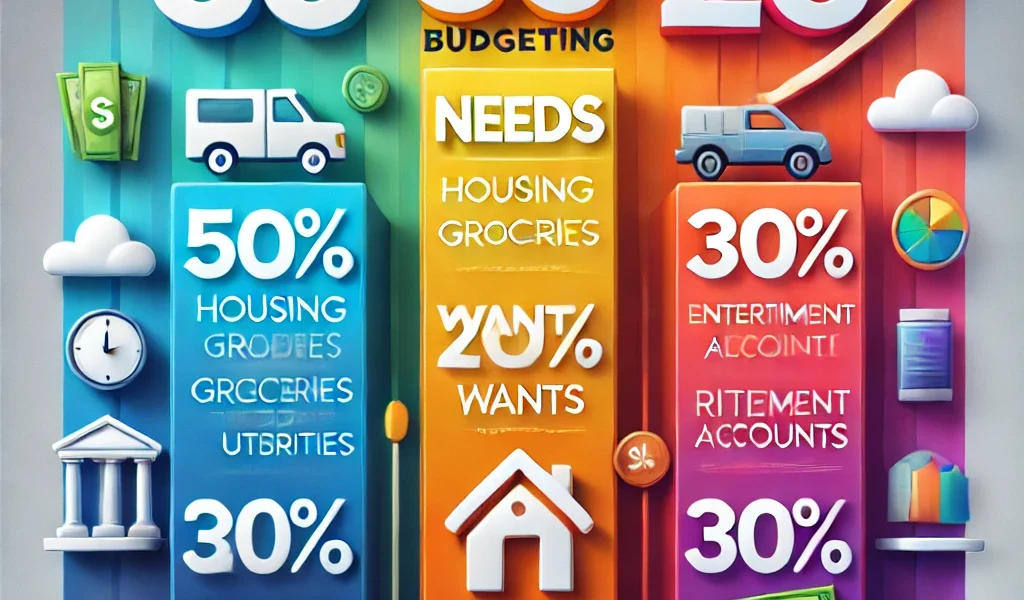The 50/30/20 rule is a popular budgeting framework that helps you allocate your income into three categories:
- 50% for needs (e.g., housing, utilities, groceries)
- 30% for wants (e.g., entertainment, hobbies, travel)
- 20% for savings and debt repayment
If you’re focusing on long-term investments, you can adapt this structure to prioritize wealth-building without compromising essential expenses. Here’s how:
✅ 1. Reframe the Categories for Investment Goals
Adjust the standard breakdown to align with your investment objectives. For example:
- 50% – Essentials & Fixed Costs: Maintain this portion to cover necessary living expenses.
- 20% – Lifestyle & Discretionary Spending: Reduce this category slightly to free up more funds for investing.
- 30% – Savings & Long-Term Investments: Increase your investment contribution by expanding this section.
Example: If you earn $5,000 monthly:
- $2,500 (50%) for essentials
- $1,000 (20%) for wants
- $1,500 (30%) for investments (retirement accounts, stocks, real estate, etc.)
📈 2. Prioritize Tax-Advantaged and High-Growth Accounts
When allocating your “20%” (or more) toward savings and investments, prioritize accounts that maximize tax benefits and compound growth:
- 401(k) or 403(b): Contribute enough to capture employer matching.
- IRA (Traditional or Roth): Build long-term, tax-efficient retirement wealth.
- Brokerage Accounts: For taxable investments with flexibility.
- HSA (if eligible): Triple tax advantages for future medical expenses.
📊 3. Adjust Based on Investment Timeline
Your contribution strategy depends on your investment horizon:
- Short-Term (1–5 years): Keep these funds in safer vehicles like high-yield savings or bonds.
- Medium-Term (5–15 years): Diversify with a balanced mix of stocks, ETFs, and REITs.
- Long-Term (15+ years): Focus on growth-oriented investments like index funds and equities.
📌 4. Automate and Reinvest
- Set up automatic transfers to your investment accounts monthly.
- Reinvest dividends to leverage compound growth.
- Reassess annually to rebalance your portfolio and align with goals.
🔍 5. Modify as Your Income Grows
As your earnings increase, you can:
- Cap lifestyle inflation and channel the extra funds toward investments.
- Gradually shift to a 40/20/40 model (with 40% toward investments).




